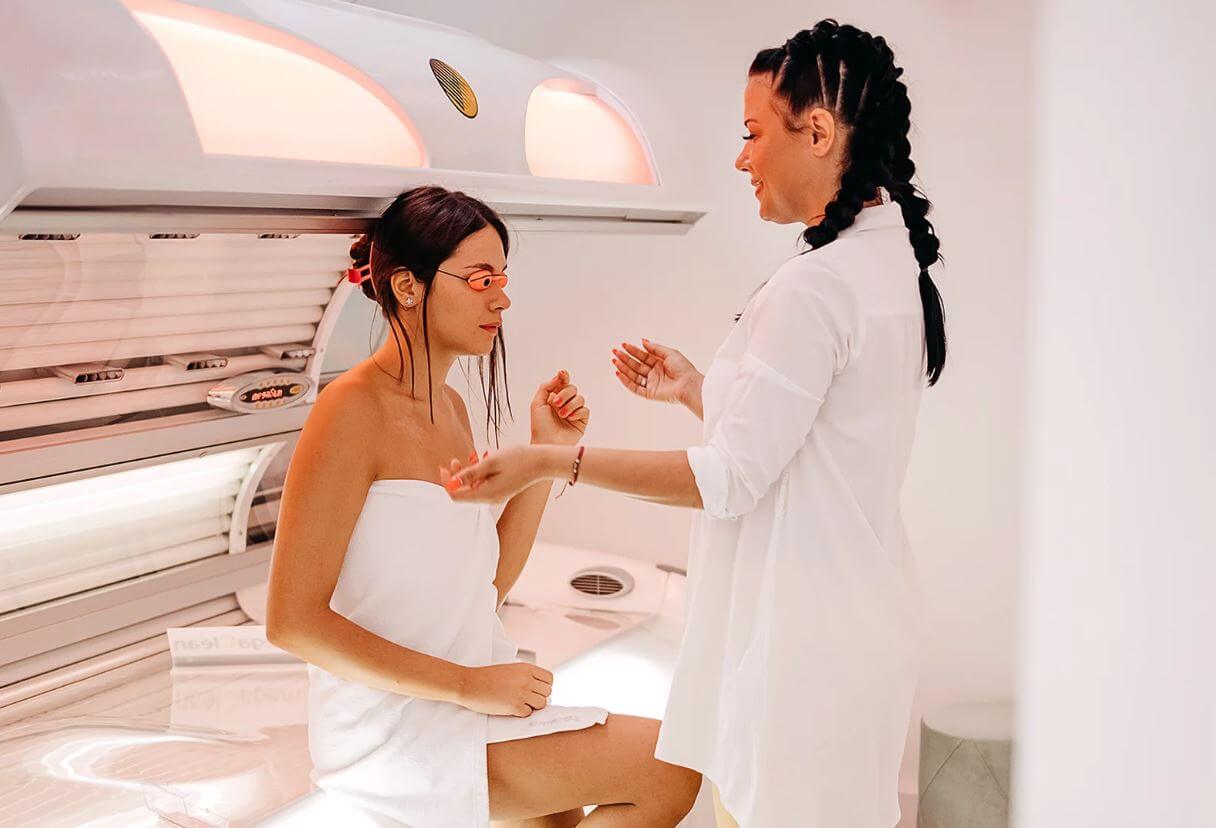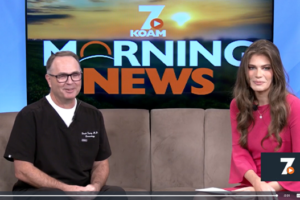Read Full Article HereThere was a lot to be gobsmacked over in the “office tour” video Kim Kardashian posted to TikTok in January (don’t get us started on the custom Rick Owens furniture), but nonchalantly displaying her in-office tanning bed really took the cake. People had very strong feelings about this, but the reality star claims to have a good reason.
Kardashian, who has been open about her 18-year experience with psoriasis, later clarified that she uses her tanning bed during flare-ups of the autoimmune condition. She remembers watching her mom — Kris Jenner, who also has psoriasis — visit tanning salons to alleviate her skin flare-ups, Kardashian previously wrote in an essay for Poosh. As absurd as it sounds, she’s not the only one. Recently, a creator on TikTok named Jess Einaudi filmed a video before hitting a tanning bed for the same reason. “I’m about to go do something I should never do,” she says in the clip. And there are plenty more where that came from.
This may have you wondering, is there ever an instance where using a tanning bed is medically necessary? Most doctors and dermatologists have been warning against the dangers of tanning beds for decades because they can damage the cells’ DNA, potentially causing mutations that may lead to cancer. A British Medical Journal in 2012 found that tanning before the age of 35 increases the risk of melanoma by 59 percent, squamous cell carcinoma by 67 percent, and basal cell carcinoma by 29 percent. In fact, Since 2003, UV radiation has been listed by the U.S. National Toxicology Program as a known carcinogen (cancer-causing substance). “Tanning beds are never medically indicated,” Azza Halim, MD, a board-certified physician and anesthesiologist, tells POPSUGAR.
Can Tanning Beds Be Used to Treat Skin Conditions?
So, where did people get this idea that tanning beds can soothe certain skin conditions? Well, because UVB — which is beamed onto your skin in a tanning bed alongside more harmful UVA rays — is sometimes used as a treatment for psoriasis and other inflammatory skin conditions like atopic dermatitis (eczema), says Jennifer Holman, MD, a board-certified dermatologist with U.S. Dermatology Partners in Tyler, TX.
It’s a treatment called phototherapy. “[Phototherapy] works to decrease inflammation in the skin and slow the production of skin cells,” says Dr. Holman. “Ideally, when performing phototherapy we use something called ‘narrow-band UVB therapy [NBUVB],’ where we expose affected skin to a very narrow spectrum of UVB light, which we know carries a much lower risk of skin cancer and is the medically effective spectrum of light.”
According to Dr. Holman, phototherapy is sometimes recommended instead of oral or topical medications because these other treatments come with what she calls “systemic risk.” Phototherapy is targeted to a specific area of your body, while medication taken in a pill or slathered on your skin is absorbed by your bloodstream.
But while phototherapy treatments are short — “only a few minutes long,” according to Dr. Holman — they can be burdensome for some patients. “They have to come into the doctor’s office during business hours three times a week and sometimes have to pay a copay each time. Many of my patients live over an hour from my office, have full-time employment, or can’t prioritize paying three copays a week.”
For patients such as these who need to prioritize flexibility when it comes to their inflammatory skin condition treatments, Dr. Holman said she has recommended short-term, low-dose tanning bed exposure.
“There is still a long-term skin cancer risk from even short-term tanning bed exposure, but in many medical situations, we make choices where benefits and risks are weighed,” explains Dr. Holman. “For psoriasis flares and symptomatic cases of pityriasis rosea where in-office NBUVB is not feasible, I usually recommend five minutes of tanning bed exposure, increasing by one minute per session for no more than 10 minutes, three times a week for up to four weeks.”
And no, tanning won’t help “dry out” your breakouts, as many people on TikTok also claim. “Mild exposure to UV light may improve acne based on its anti-inflammatory effects, but the risk of increased hyperpigmentation in areas of acne and downstream risks of skin cancer certainly outweigh those benefits,” said Dr. Holman.
While a tan may initially improve the appearance of acne by drying out sebum, the effects are temporary and it could ultimately make acne worse. While you tan, the top layer of the skin, the epidermis, becomes dry and thick. This causes the body to compensate by producing even more oil, which in turn, could lead to more acne. If that isn’t enough to make you think twice before tanning, according to the American Academy of Dermatology, the sun’s ultraviolet rays can make acne spots darker and take longer to fade.
“We have many other effective treatments for acne that we recommend as dermatologists and UV exposure is certainly not something I would recommend as a primary strategy to treat acne,” Dr. Holman says.
Just because a skin condition may react positively to tanning beds or overall sun exposure isn’t a get-out-of-jail-free card. “Atopic dermatitis, psoriasis, and cutaneous T cell lymphoma all benefit from UV exposure, but that must be weighed against the risks of skin cancer and sunburn because your skin is also exposed to the harmful spectrum of UV light,” Dr. Holman says.
Can Tanning Beds Really Help With Skin Conditions Like Psoriasis and Acne?
February 27, 2024








